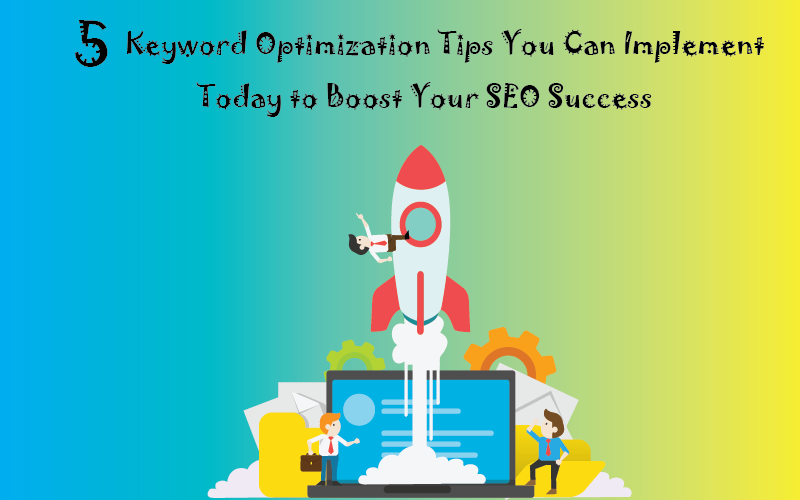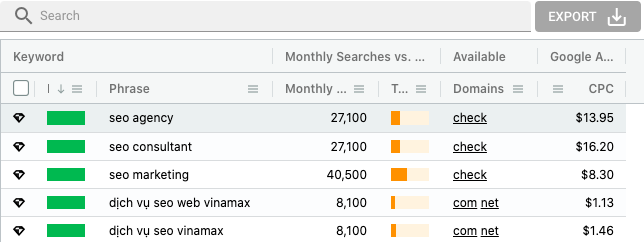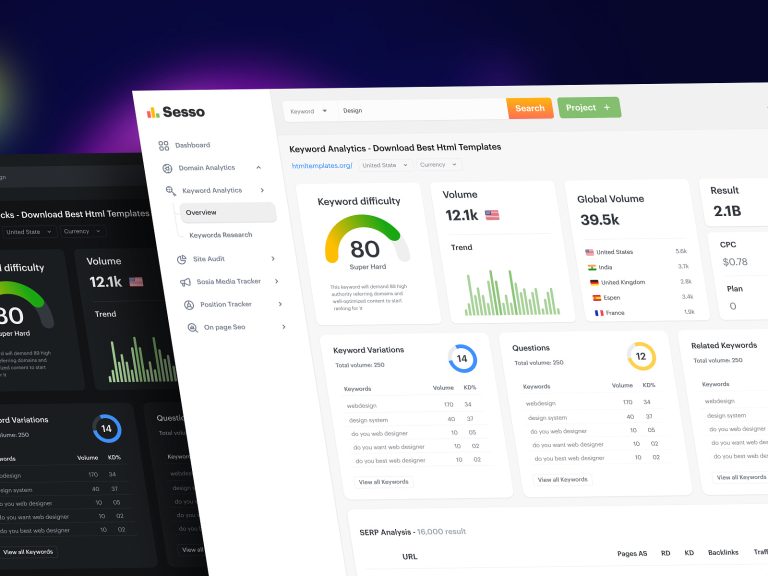
In the ever-evolving world of digital marketing, keyword optimization has become a cornerstone of effective search engine optimization (SEO). As search engines like Google continue to refine their algorithms to deliver the most relevant and valuable content to users, the importance of strategically using keywords in your website’s content cannot be overstated. This guide will walk you through the fundamentals of keyword optimization, its significance, and practical strategies to implement it effectively.
What Is Keyword Optimization?
Keyword optimization is the process of improving your website’s content to better align with the search terms that users are entering into search engines. It involves identifying and incorporating the right keywords into your content, meta tags, URLs, and other on-page elements to increase visibility and drive organic traffic.
It’s important to note that keyword optimization is not just about stuffing your content with as many keywords as possible. Instead, it’s about strategically placing relevant keywords in the right places so that both search engines and users can easily understand what your content is about.
Why Is Keyword Optimization Important?
There are several compelling reasons why keyword optimization should be a priority in your SEO strategy:
1. Improves Visibility in Search Engines
By optimizing your content with the right keywords, you signal to search engines that your site is relevant to specific search queries. This increases the likelihood of your pages appearing higher in search results, which leads to more visibility and traffic.
2. Provides Value to Users
SEO isn’t just about pleasing search engines—it’s also about delivering value to your audience. When you use the right keywords, you’re helping users find the information they need faster. This enhances their experience on your site and builds trust and credibility over time.
3. Increases Traffic and Conversions
Higher rankings mean more visibility, which translates to more clicks and visits. With well-optimized content, you can attract more targeted traffic to your site, which can lead to increased leads, sales, and conversions.
How to Optimize for Keywords to Boost SEO Success

Here’s a step-by-step approach to help you implement effective keyword optimization:
1. Conduct Thorough Keyword Research
Before you start optimizing, you need to identify the right keywords for your content. Use tools like Google Keyword Planner, Ahrefs, or SEMrush to find high-volume, low-competition keywords that are relevant to your niche.
- Focus on primary keywords—the main terms that describe your content.
- Include secondary keywords—related terms that support your primary keywords.
- Consider long-tail keywords—more specific phrases that have lower competition but higher conversion potential.
2. Group Similar Keywords
Once you have a list of keywords, group them into clusters based on topic. This helps you create content that targets multiple related terms at once, increasing your chances of ranking for a broader range of queries.
For example, if you’re writing about “digital pianos,” you might cluster keywords like:
– “best digital pianos”
– “buy digital piano online”
– “how to choose a digital piano”
This allows you to create a single piece of content that covers all these related topics.
3. Map Your Keywords to Pages
Assign each keyword cluster to a specific page on your website. This ensures that you’re not targeting the same keywords on multiple pages, which can confuse search engines and dilute your efforts.
Use a keyword mapping template to organize your clusters, primary keywords, secondary keywords, and target pages. Regularly review and update this map as your content evolves.
4. Create Quality Content Aligned with Search Intent
High-quality content is the foundation of successful keyword optimization. Make sure your content addresses the search intent behind the keywords you’re targeting.
Search intent can be categorized into four types:
– Informational: Users are looking for answers to questions.
– Navigational: Users are searching for a specific website.
– Transactional: Users are ready to make a purchase.
– Commercial Investigation: Users are comparing options before making a decision.
Align your content with the intent of your target keywords to ensure it meets user expectations and ranks well.
5. Optimize On-Page Elements
In addition to your content, optimize the following on-page elements to improve your keyword strategy:
a. Title Tags and Meta Descriptions
- Include your primary keyword in the title tag (ideally at the beginning).
- Keep title tags under 60 characters to avoid being cut off in search results.
- Write compelling meta descriptions that include your keyword and encourage users to click.
b. HTML Headings
- Use your primary keyword in the H1 tag (main heading).
- Incorporate secondary keywords in H2 and H3 headings to structure your content logically.
c. URL Slugs
- Create descriptive, user-friendly URLs that include your target keyword.
- Avoid long, complex URLs that are hard to read.
d. Image Alt Text
- Add descriptive alt text to images that includes your target keywords.
- Ensure the text is natural and relevant to the image.
Best Practices for Effective Keyword Optimization

To ensure your keyword optimization efforts yield the best results, follow these best practices:
1. Use Keywords Naturally
Avoid keyword stuffing—overloading your content with keywords in an unnatural way. Instead, integrate keywords smoothly into your text so it reads naturally to users.
2. Maintain a Balanced Keyword Density
While there’s no exact formula, aim for a 1-2% keyword density in your content. This means your primary keyword should appear roughly once every 50-100 words.
3. Update and Refresh Content Regularly
Search trends and user behavior change over time. Regularly update your content to reflect new information, add fresh insights, and incorporate updated keywords.
4. Monitor Your Performance
Use tools like Google Analytics, SEMrush, or Ahrefs to track your keyword performance. Monitor your rankings, traffic, and engagement metrics to identify areas for improvement.
5. Leverage Tools for Efficiency
Tools like Yoast SEO, Rank Math, and Surfer SEO can help you analyze your content, check keyword usage, and provide suggestions for improvement.
Common Mistakes to Avoid

Even experienced marketers can fall into common pitfalls when it comes to keyword optimization. Here are a few mistakes to watch out for:
1. Ignoring Search Intent
Focusing only on keywords without considering the intent behind them can lead to irrelevant content that fails to engage users.
2. Overlooking Long-Tail Keywords
Many marketers focus on high-volume, competitive keywords while neglecting long-tail keywords, which often have lower competition and higher conversion rates.
3. Not Updating Content
Old content that hasn’t been updated may no longer be relevant or optimized for current search trends, leading to poor rankings.
4. Using Irrelevant Keywords
Including keywords that don’t align with your content or audience can hurt your SEO efforts and lead to a poor user experience.
Conclusion
Keyword optimization is a vital component of any successful SEO strategy. By understanding how to effectively use keywords in your content, meta tags, and other on-page elements, you can improve your search engine visibility, attract more targeted traffic, and ultimately grow your business.
Remember, keyword optimization is not a one-time task—it’s an ongoing process that requires regular monitoring, adjustments, and updates. Stay informed about industry trends, use the right tools, and always prioritize user experience to achieve long-term SEO success.
With the right approach, you can turn keyword optimization into a powerful tool for driving growth and achieving your digital marketing goals.






